Residing in this disused chicken coop amongst a pile of discarded aluminum drink cans is one of Australia’s most prized muscle cars. It has occupied this spot since 1988. The recent passing of its original owner means that it is set to be offered for sale via auction. This first photo was supplied via the Car Advice.com.au website and showed the state that the vehicle was in when it was unearthed. It has now been dragged out of hiding but remains virtually untouched. If you would like to become the next owner of one of Australia’s unsung heroes, then you will find the Falcon listed for sale here at Grays Online. The significance of this vehicle can be gauged by the auction estimate. It is expected that this Falcon will sell for somewhere in the vicinity of A$200,000 (US$143,000).
To understand the significance of this classic, you need some background into why it was created in the first place. Australia’s premier motorsport category has been, for decades, touring car (or saloon car) racing. In the late 1960s and early 1970s, this form of racing was being conducted under two sets of disjointed rules. The Australian Touring Car Championship was open to a category called Improved Production Touring Cars. These rules allowed American Trans Am spec cars to compete, including vehicles like the 1969 Ford Mustang Trans Am, along with some ring-ins like a ZL-1 equipped 1969 Camaro. For Australian manufacturers, the “big ticket” was the annual long-distance race held in October at Mt Panorama, Bathurst. This race was conducted under Series Production rules, meaning that the cars had to be essential as they rolled off the showroom floor. Engines could be blueprinted, a roll bar and racing harness were permitted for safety, and brake lining material was free. However, the rules were so strictly enforced that even the interior had to remain stock and untouched. Forget about body-hugging racing seats. If your car was produced with a bench seat, that’s what you ran. Working under the philosophy of “win on Sunday, sell on Monday,” the big three manufacturers, Ford, GM-Holden, and Chrysler (Valiant), began to produce special vehicles in a bid to secure a Bathurst win. These cars became increasingly more potent, and by 1972, all three manufacturers had high-performance muscle cars under development. Series Production rules stated that each manufacturer had to produce and sell 250 examples of a particular model to be eligible to compete under the rules. As a result, Ford was well advanced with the production of the Falcon GTHO Phase IV.
At the same time, Holden had developed a V8 Torana, and Chrysler had a Charger (either a 340ci V8 or a Hemi 6, depending on various sources) waiting in the wings. Disaster struck on June 25th, 1972. Motoring journalist Evan Green released an article in that day’s Sun-Herald newspaper. He revealed that these cars were ready to go into production and that Australia was going to find itself with a brace of 160mph supercars on the roads. He raised the specter of these cars finding their way into the hands of inexperienced drivers, and the potential consequences if things went wrong as a result. Various levels of the Australian Government immediately reacted to this story, and fearing the loss of government supply contracts, all three manufacturers canceled the production of these cars. The whole Australian production muscle car scene had managed to unravel in a mere five days. At the same time, the Confederation of Australian Motorsport, the governing body in Australia, announced the end of Series Production racing at Bathurst. They chose to replace these rules with a category called Group C Touring Cars, which allowed greater freedoms for aftermarket modifications.
However, Ford found themselves left with all of the mechanical components for their production run of Phase IV Falcons, and no market to sell them into. They devised what was referred to as a Regular Production Option, or an RPO. This was known as RPO 83, and you had to “be in the know” to be aware that this pack even existed. It meant that the Phase IV components found their way into regular production XA Falcon GTs, and very few people beyond the Ford dealers themselves knew that they existed. A total of 250 cars were built, with the split being 130 in 4-door sedan guise, and the remaining 120 being the 2-door Hardtop variant.
This 1973 Falcon GT started life as a dealer demonstrator in Spring Hill, Queensland. The owner purchased the vehicle from the dealership, and as a Ford enthusiast, he knew exactly what he was buying before he even walked through the door. The car is basically as it rolled off the production line, but with a few dealer-added options. The original wheels were replaced with these aftermarket items. The Black “hockey-stick” stripes were added, along with orange cloth inserts on the seats. Adding further to this car’s rarity is its color. It is known as McRobertson’s Old Gold. This was a corporate color for a chocolate bar manufacturer and was a color that only ever found its way onto the panels of three XA Falcon GT Hardtops. This is the only RPO 83 Falcon to wear that color, which makes it a genuine 1-of-1 car. The owner used the Falcon regularly until rising fuel and insurance costs forced him to park it in the chicken coop in 1988. He received numerous offers to purchase the car, but couldn’t bring himself to part with it. Fate intervened, and the owner sadly passed away in December of 2019. As a result, the Falcon is now being offered for sale to settle his estate.
Before we delve more specifically into this car, I am sure that there are more than a few eagle-eyed readers who find the shape of the vehicle to be very familiar. This series of the Falcon Hardtop underwent two updates throughout its production run, and it was the first of these updates that you would recognize. The XB Hardtop was used as the basis for the black Interceptor in the Mad Max films. So, well spotted! These early Falcon Hardtops were known for some rust issues, and while this car does have a few, it is structurally sound. There is rust in the rockers and some of the bolt-on panels, but addressing these problems should be easy. It isn’t clear whether there is any significant rust in or below the filler panel below the rear window. This is a real rust trap in the Hardtop, but new replacements are available. Thankfully, all of the GT-specific items like badges and the grille are intact, although the driving lights are damaged. The body also has its share of dings and dents, but all of these are repairable. One of the interesting items is the rear spoiler. Australian readers will have seen plenty of these bolted to the backs of Falcons in their time, but this one is very different. The majority that we see on cars today are reproduction items made from either fiberglass or plastic. This one is a genuine Ford component and is made from aluminum.
Now we get to the crux of what made the RPO 83 so special. The standard Ford Falcon XA GT was equipped with a 351ci Cleveland V8, producing an official 300hp. The RPO 83 also featured the Australian-cast Cleveland 4V, but with a few notable additions. The original cast-iron exhaust manifolds made way for a set of RPO-specific tubular HM Headers. The standard carburetor made way for a 750cfm Holley unit. There was also a special oil pan that was designed to assist cool the engine oil, as well as to prevent oil surge. Ford still listed the output as being 300hp. Yeah, right! This Falcon is a numbers-matching car, and all RPO 83 vehicles were fitted with a 4-speed Top Loader transmission, as well as the bullet-proof 9″ rear end. In this case, it is a Detroit Locker, specifically designed for racing. The previously mentioned Group C regulations allowed for modifications to be made to the base vehicle. However, specific components still had to be produced and sold in certain numbers to be eligible. The Detroit Locker was one of those components. There is a famous shot taken from the inside of this car’s predecessor, the XY GTHO Phase III. The photographer is looking over the driver’s shoulder, and the speedometer needle is showing a genuine 145mph…on a public road! This series of the Falcon was significantly more sleek and aerodynamic than its predecessor, so the potential for it to achieve 160mph in standard form was a real possibility.
When you look at the Falcon’s external appearance, it is no surprise to find the interior has also deteriorated markedly. Its time in the chicken coop has allowed a family of enormous rats to take up residence, and I suspect that it doesn’t smell particularly inviting in there. These have made a meal of some of the interior trim and the wiring. Therefore, it is going to take a lot of work to return it to its former glory. You can still see traces of the dealer-fitted orange cloth upholstery, which was applied over the original vinyl. I’m in two minds about this when it comes to undertaking a restoration. While it would be nice to return it to the state it was in when the original owner purchased it, the idea of returning it to factory specifications holds a great deal of attraction. The good news here is that despite its dilapidated state, the interior is original and unmolested. All of the factory options remain intact, and they tell the story of a car that was designed to be comfortable, as well as being seriously fast. Tinted glass is a rarity in the XA Falcon, but this car features it. Also, it is equipped with air conditioning, power windows, and a factory radio/8-track player.
That Sunday in June of 1972 changed the Australian muscle car scene forever. Cars like the Falcon GTHO, the Holden Monaro GTS, the Holden Torana XU-1, and the Valiant Charger R/T E49, had become halo cars. They were the poster child for manufacturer performance cars and were designed to win the race at Bathurst. Winning that race was part of the pathway to winning the race in the country’s showrooms, but that all ended with the Supercar Scare. The Australian motor industry still managed to produce some exceptional cars like the Torana A9X, but the glory days were over too soon. This car represents Ford’s attempt (successfully) to slip one last true muscle car under the radar. Once restored, this is an Australian production car that should be capable of hitting 160mph and covering the ¼ mile in 14 seconds. It’s paint color, and its option combination has produced a truly unique car. I would love to see the vehicle restored because, after 32-years in a chicken coop, it has earned that right.
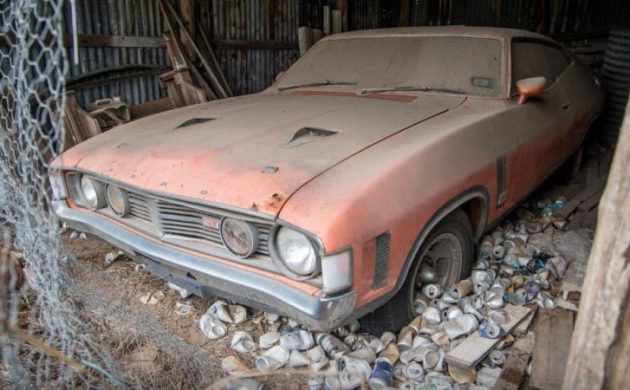
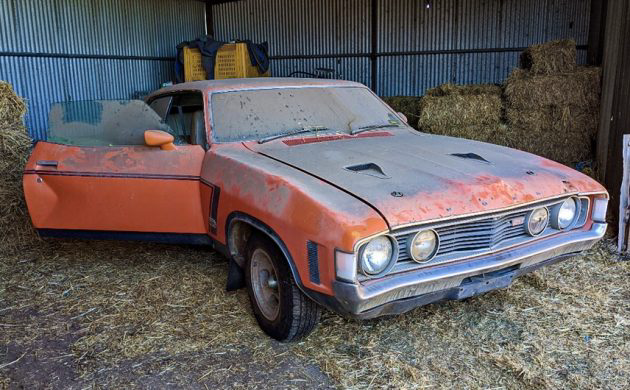
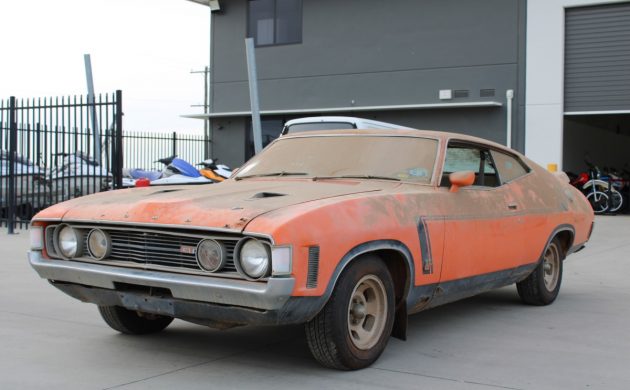
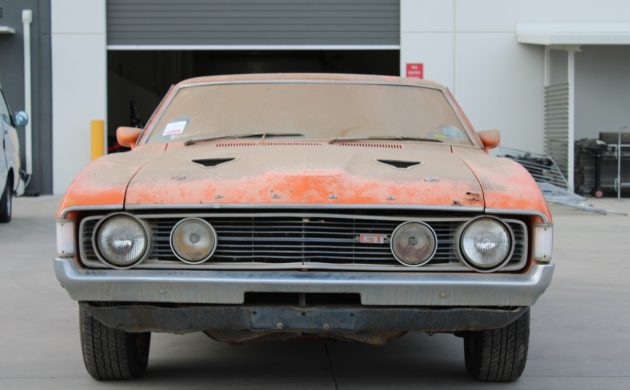
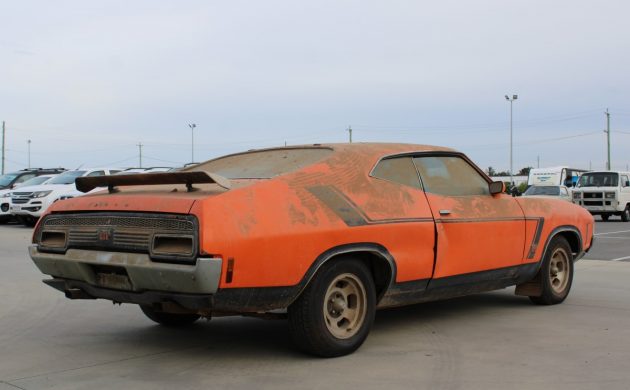
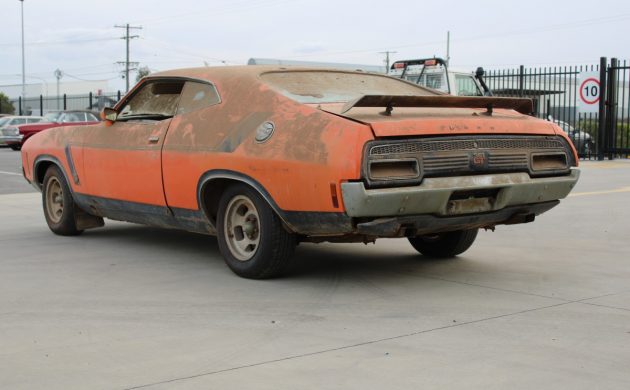
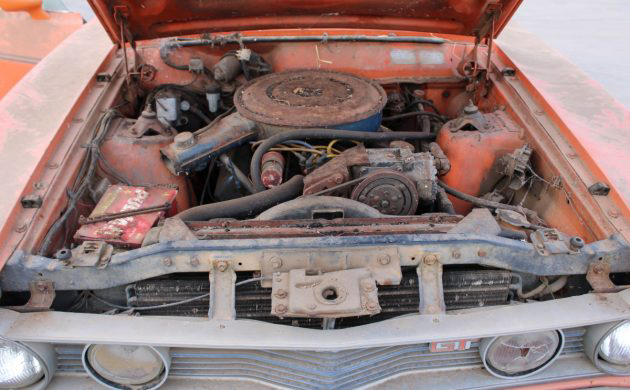
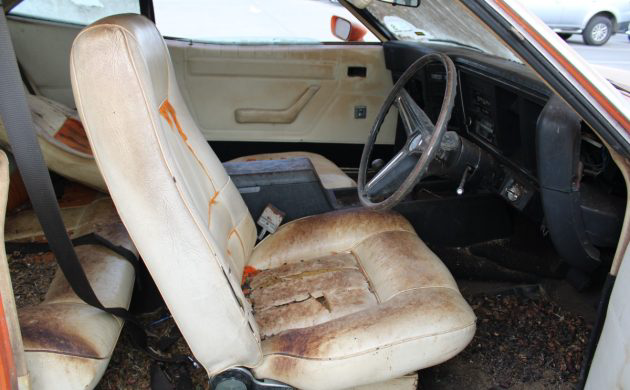


This car is right up at the top of my wish list if/when I win the lottery. It would definitely turn some heads at U.S. state side car shows.
100% on my wish list as well and yes. if won the lottery.. I’d buy it and either restore since one of only 3 in that color..
Oh. My. Goodness.
Great write-up. My knowledge of The Cars Of Oz is shamefully scant. I learned a few things today.
Agreed. One of your best Adam. Cheers for that.
I learned there cars existed today lmfao.
Nah, you saw this car in the Road Warrior and Mad Max. If you saw any of those movies in the 80’s you saw the Interceptor and even the Pursuit Specials.
Is this the same model car to the Eric Bana car ?
I loved that documentary, about a lifelong relationship with a car called “The Beast”.
Worth watching.
https://g.co/kgs/U3j9WC
The last of the V8s!
Ed, I love you!
If this story is accurate I’m thinkng that Motoring Journalist Evan Green was not a very populal person in Australia after that folley.
I could never understand why Australia didn’t have the same cars as the US. It would have been cheaper to just make a left and right hand side version than making completely different cars. But that’s just me.
I thought that the Aussie Falcons were really cool,
until I saw a row of them at Ford’s 100th anniversary in
Dearborn,Mich. in 2003.They’re like Model A’s – one is
great,but when you see a long row of them in the same
body style,it kind of looses the appeal (at least to me).
Plus,these aren’t exactly cheap cars anymore.
What a disgrace – if it was anything else it would have been at the tip 2 decades ago
I bet there were some fun times hanging with your mates and pounding beers out back with the Falcon
One warning for non-Australian buyers…they have a boatload of poisonous spiders and other bugs that will kill you if they bite you, so maybe having it shipped via a polar route might be in the cards!
or a fumigated container ??
The bidding is up to A$267,309 with 4 days to go.
Looks like a Mercury Cyclone of that era.
Dave , right on about the spiders , bugs and don’t forget the snakes, not many more venomous than what we have. On the other hand , an excellent form of free population control. There are only 25 million of us in our country which is about about the size of America so it works.
Bid right now is nearly at 200k U.S.
Over A$300,000 now.
Excellent write up. Best read I have had on here in a long time.
Thanks for the great writeup! Even without the blower the Toecutter’s KZ1000 was no match for this car’s top end. Even so, the clip remains a cautionary tale for motorcyclists of the hazards of not paying attention.
The KZ1000 definitely was no match for the semi truck, head on or otherwise, that flattened that bloke into a pancake! Never forgot the big wide eyes before impact.
the car is a fake, the front end doesn’t match the rear.
No it is not a Fake, I can even show you where this car was and had seen it a couple of and spoke to the man who owned it. It was not in a chicken coupe but an old wooden 1 car garage. They got sick of people coming in to see if it was for sale so hung canvas over the front of the shed as a make do door. This is a genuine thing mate.
is this the one from out between laidley & forest hill that can could be seen from hway ?
Easy there Dundee its an observation . Just get a vegemite sandwich and some fosters and chill.
I think it looks like a road warrior to me 👍
The car is not a fake your comment shows you are not a fan of the Blue Oval.
You need to do your homework!
Great write up! Over $300 k now.
Amazing car for the down under crowd.. great find and a great fetch for the future owner!!
Speaking of losling appeal, seems to me the stated value of 300,000 whatevers is about 10x what it will be sold for. Can’t imagine it would even be in six figures but hey, what do I know about Aussie values.
$306500.
Awesome! Mad Max cars interceptor. I bet it goes for a huge price
Isn’t that what Mel Gibson drove in the Mad Max movie ?
Seems fitting that Ford would go after any and all professional racing wherever they could find it, although out of it stateside due to the cost of an emissions plant and engineering.
I wish Ford would have built these here as a ’72 on up Torino, they don’t look quite as big as the mid sized Fords sold here in the U.S. and the styling is harder edge. Cleveland power in both 351 and 302 cubic inches down there in Australia, my question for all the great folks from down under regards any smog equipment these may of had….or were they unmolested with that junk? I’m guessing the 351 was the largest Ford engine available, or was the big 429/460 available at all?
Middleweight contender here in the states at best it would have been, muscle means mass, the more the better at least in theory. Great car and very interesting history.
Troy the bigger engines were not available in production cars, however I have a friend who owns an XY GT which belonged to the GM of Ford at the time (1971) when new, that car is a 1 of 1 also, Bill the G.M of Ford had it flown to the U.S when the car was being built and had the big engine etc fitted there along with some other bits and pieces. So that was the only one that had the big engine to my knowledge. I did work for a Ford Dealer not far from where this car was stored and went past it every time I went to Brisbane right on a main road.
came back to Australia with a 428cui motor
The 302 here in Aus was not a Cleveland, it was a Windsor engine.
We had both Windsor and Cleveland 302 engines in Australia.
I think the emission control junk came in either ‘74 or ‘75.
I know I bought a new Holden (GM) in ‘75, it was an Aussie built 308ci. and I disabled the crap. Instantly more than doubled my fuel economy.
Eric Bana…your car awaits.
Would not be surprised if he won the bid. At $303k, he could afford it.
Most car people were pretty shattered when the supercar scare came about but I didn’t know it was Evan Green who let the cat out of the bag, a side issue was young guys buying ex police chasers at auction which were plain wrapper GT cars for next to nothing and wrapping themselves around trees
It’s a crime that Ford US gave up the Cleveland engine. Best all around engine they ever engineered.
Too bad they didn’t sell these in the US.
Some people “try” to make 1 of these out of a Torino. lol
I guess those outboard headlites are 7″ US spec sealed beams?
As for the inboard driving? lights & all eventual needed mechanical parts, it would be fun to see what can be adopted or even matched up with domestic parts – such as fuel & water pumps, gas tank, etc. – no listing on Rockauto.
I hope they bring the GT Ford back to life as it deserves to be back on the road out of that chicken shed.May that Ford sparkle and shine as it should.From Car lover Michael Assfalg long live that Aussie Icon.
Sounds a lot like our society today – hard to believe this was the early ‘70’s . Scared weiners worried about everything and turn every decision to made by the nanny state is sure to be the future of the US as well.
Really enjoyed this read. If you haven’t already look up “Bathurst 1000” on YouTube. There is a ton of vintage content along with the more current Touring Car Masters races. These are men driving men’s cars.
Really cool if it were black it would look right out of mad max!!!
I believe the bidding had been closed at $306500. And for that car, it’s a steal.
I wouldn’t say it’s a steal as the car is really rusty .
Grew up around this era of Aussie cars – responsible for the demise of a few unfortunately. You could get these bodies with 6 cylinder motors and build V8’s to your own spec and it was all fairly cheap if you were DIY. The GT cars were out of my price range but that was probably a good thing.